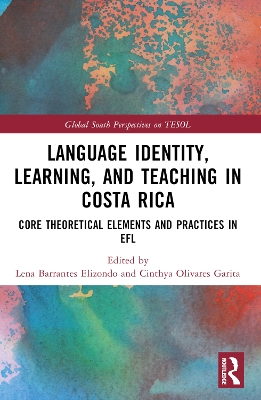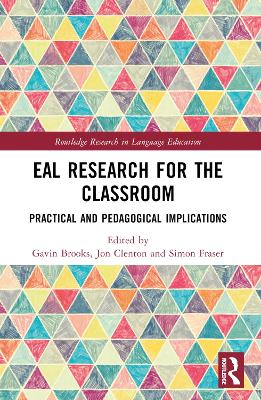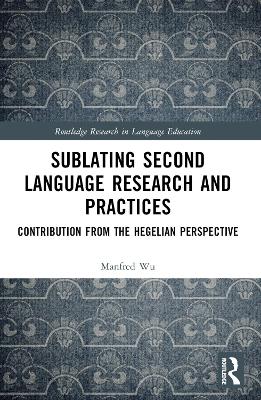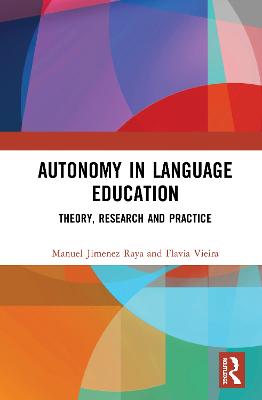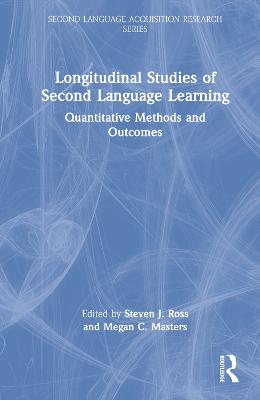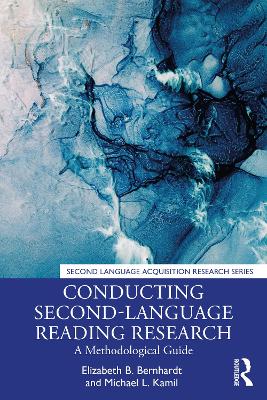Technology in Second Language Writing
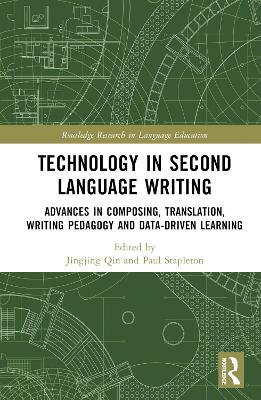 portes grátis
portes grátis
Technology in Second Language Writing
Advances in Composing, Translation, Writing Pedagogy and Data-Driven Learning
Qin, Jingjing; Stapleton, Paul
Taylor & Francis Ltd
11/2022
186
Dura
Inglês
9781032245805
15 a 20 dias
Descrição não disponível.
Chapter 1. Introduction: Advances in writing technology over the eons
Paul Stapleton
Chapter 2. Interactive academic EFL writing assisted by GT for Chinese non-English major students
Shu-Chiao Tsai
Chapter 3. The use of Google Translate and complementary resources by Chinese students: A case study writing in Catalan
Ruocheng Ning
Chapter 4. Using machine translation in EFL Writing: A scoping review
Burcu Gokgoz-Kurt
Chapter 5. Repeated academic writing with synchronous and asynchronous teacher electronic feedback: How are macro and micro aspects affected?
Sima Khezrlou
Chapter 6. Wiki writing in medicine and students' perceptions: The case of an English-in-the-Discipline course in Hong Kong
Wenfeng Wang, Simon Boyton, Laura Wakeland, Daya Datwani, Juan Castillo, Letty Chan, and Simon Scanlon
Chapter 7. Multimodal resemiotization: Examining one L2 writer's interactions with equity videos
Emma R. Britton, Hengyi Liu, Xinyue Zuo, and Theresa Y. Austin
Chapter 8. The dialogical conception of beginning L2 writing via social networking and telecollaboration
Maria Bondarenko and Liudmila Klimanova
Chapter 9. Examining directness with corpus tools in Iraqi EFL writing
Ashleigh Cox, Eric Friginal, and Sabah S. Mustafa
Chapter 10. L2 handwritten assignments for automated writing evaluation: A text recognition study
Vahid Abolghasemi and Reza Falahati
Chapter 11. Using computer keystroke logging in the second language composition classroom
Hampus Holm, Etienne Skein, and Kirk P. H. Sullivan
Paul Stapleton
Chapter 2. Interactive academic EFL writing assisted by GT for Chinese non-English major students
Shu-Chiao Tsai
Chapter 3. The use of Google Translate and complementary resources by Chinese students: A case study writing in Catalan
Ruocheng Ning
Chapter 4. Using machine translation in EFL Writing: A scoping review
Burcu Gokgoz-Kurt
Chapter 5. Repeated academic writing with synchronous and asynchronous teacher electronic feedback: How are macro and micro aspects affected?
Sima Khezrlou
Chapter 6. Wiki writing in medicine and students' perceptions: The case of an English-in-the-Discipline course in Hong Kong
Wenfeng Wang, Simon Boyton, Laura Wakeland, Daya Datwani, Juan Castillo, Letty Chan, and Simon Scanlon
Chapter 7. Multimodal resemiotization: Examining one L2 writer's interactions with equity videos
Emma R. Britton, Hengyi Liu, Xinyue Zuo, and Theresa Y. Austin
Chapter 8. The dialogical conception of beginning L2 writing via social networking and telecollaboration
Maria Bondarenko and Liudmila Klimanova
Chapter 9. Examining directness with corpus tools in Iraqi EFL writing
Ashleigh Cox, Eric Friginal, and Sabah S. Mustafa
Chapter 10. L2 handwritten assignments for automated writing evaluation: A text recognition study
Vahid Abolghasemi and Reza Falahati
Chapter 11. Using computer keystroke logging in the second language composition classroom
Hampus Holm, Etienne Skein, and Kirk P. H. Sullivan
Este título pertence ao(s) assunto(s) indicados(s). Para ver outros títulos clique no assunto desejado.
L2 writing;technology in L2 writing;multimodal writing;digital feedback;machine translation;data-driven learning;corpus;L2 writing pedagogy;LEP Student;Data Driven Learning;L2 Digital Literacy;EFL Writing;SNS Environment;EFL Learner;L2 Writing Classroom;EFL Student;L2 Writing Skill;L2 Writing Instructor;Keystroke Logging Tool;L2 Write Pedagogy;Delayed Post-test;WCF;FRE Score;Writing Errors;Locomotive Syndrome;Awe System;KSL Program;Language Awareness;TOEFL iBT Test;Experienced EFL Teacher;KSL Software;Chinese EFL Student
Chapter 1. Introduction: Advances in writing technology over the eons
Paul Stapleton
Chapter 2. Interactive academic EFL writing assisted by GT for Chinese non-English major students
Shu-Chiao Tsai
Chapter 3. The use of Google Translate and complementary resources by Chinese students: A case study writing in Catalan
Ruocheng Ning
Chapter 4. Using machine translation in EFL Writing: A scoping review
Burcu Gokgoz-Kurt
Chapter 5. Repeated academic writing with synchronous and asynchronous teacher electronic feedback: How are macro and micro aspects affected?
Sima Khezrlou
Chapter 6. Wiki writing in medicine and students' perceptions: The case of an English-in-the-Discipline course in Hong Kong
Wenfeng Wang, Simon Boyton, Laura Wakeland, Daya Datwani, Juan Castillo, Letty Chan, and Simon Scanlon
Chapter 7. Multimodal resemiotization: Examining one L2 writer's interactions with equity videos
Emma R. Britton, Hengyi Liu, Xinyue Zuo, and Theresa Y. Austin
Chapter 8. The dialogical conception of beginning L2 writing via social networking and telecollaboration
Maria Bondarenko and Liudmila Klimanova
Chapter 9. Examining directness with corpus tools in Iraqi EFL writing
Ashleigh Cox, Eric Friginal, and Sabah S. Mustafa
Chapter 10. L2 handwritten assignments for automated writing evaluation: A text recognition study
Vahid Abolghasemi and Reza Falahati
Chapter 11. Using computer keystroke logging in the second language composition classroom
Hampus Holm, Etienne Skein, and Kirk P. H. Sullivan
Paul Stapleton
Chapter 2. Interactive academic EFL writing assisted by GT for Chinese non-English major students
Shu-Chiao Tsai
Chapter 3. The use of Google Translate and complementary resources by Chinese students: A case study writing in Catalan
Ruocheng Ning
Chapter 4. Using machine translation in EFL Writing: A scoping review
Burcu Gokgoz-Kurt
Chapter 5. Repeated academic writing with synchronous and asynchronous teacher electronic feedback: How are macro and micro aspects affected?
Sima Khezrlou
Chapter 6. Wiki writing in medicine and students' perceptions: The case of an English-in-the-Discipline course in Hong Kong
Wenfeng Wang, Simon Boyton, Laura Wakeland, Daya Datwani, Juan Castillo, Letty Chan, and Simon Scanlon
Chapter 7. Multimodal resemiotization: Examining one L2 writer's interactions with equity videos
Emma R. Britton, Hengyi Liu, Xinyue Zuo, and Theresa Y. Austin
Chapter 8. The dialogical conception of beginning L2 writing via social networking and telecollaboration
Maria Bondarenko and Liudmila Klimanova
Chapter 9. Examining directness with corpus tools in Iraqi EFL writing
Ashleigh Cox, Eric Friginal, and Sabah S. Mustafa
Chapter 10. L2 handwritten assignments for automated writing evaluation: A text recognition study
Vahid Abolghasemi and Reza Falahati
Chapter 11. Using computer keystroke logging in the second language composition classroom
Hampus Holm, Etienne Skein, and Kirk P. H. Sullivan
Este título pertence ao(s) assunto(s) indicados(s). Para ver outros títulos clique no assunto desejado.
L2 writing;technology in L2 writing;multimodal writing;digital feedback;machine translation;data-driven learning;corpus;L2 writing pedagogy;LEP Student;Data Driven Learning;L2 Digital Literacy;EFL Writing;SNS Environment;EFL Learner;L2 Writing Classroom;EFL Student;L2 Writing Skill;L2 Writing Instructor;Keystroke Logging Tool;L2 Write Pedagogy;Delayed Post-test;WCF;FRE Score;Writing Errors;Locomotive Syndrome;Awe System;KSL Program;Language Awareness;TOEFL iBT Test;Experienced EFL Teacher;KSL Software;Chinese EFL Student

